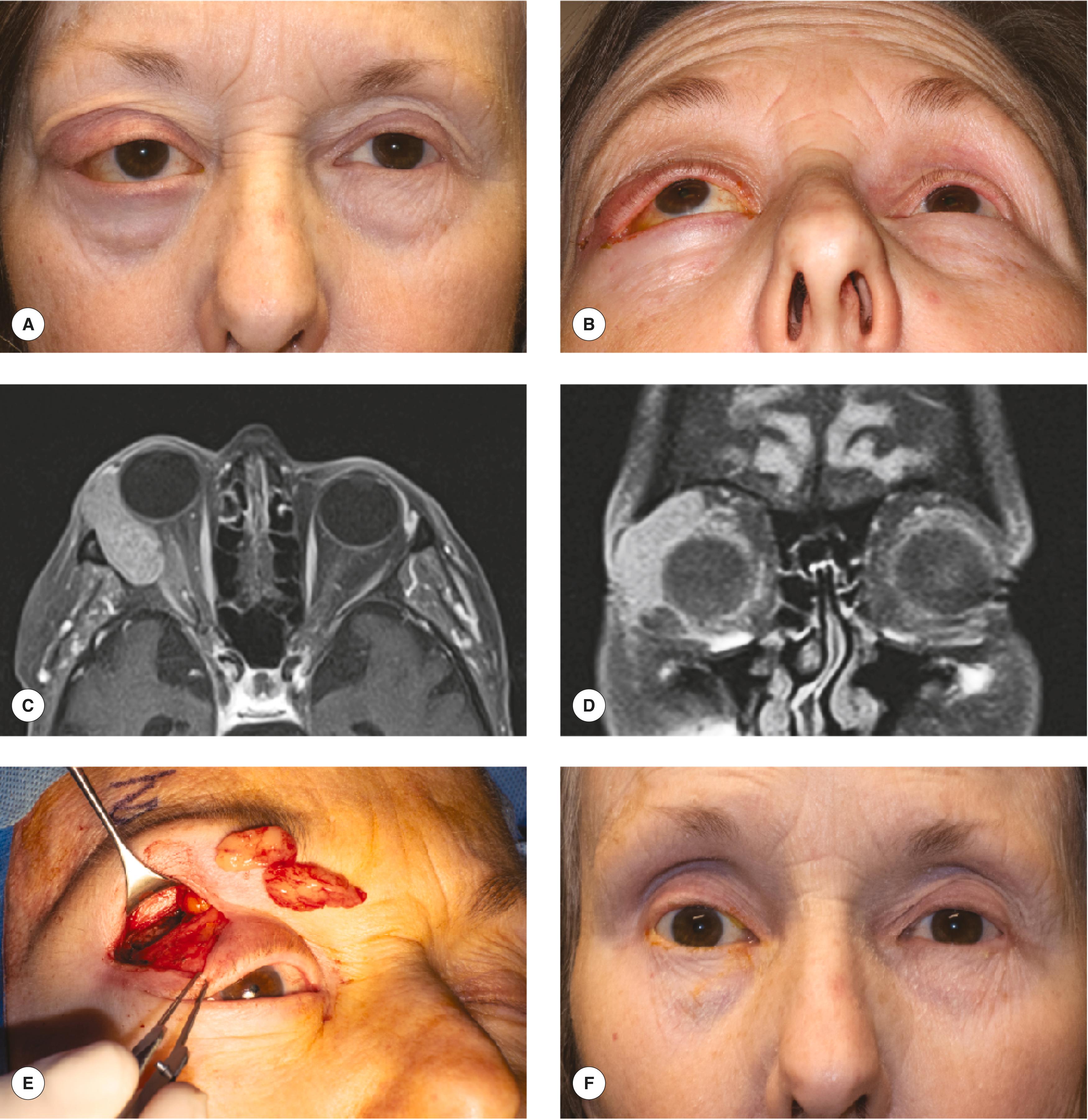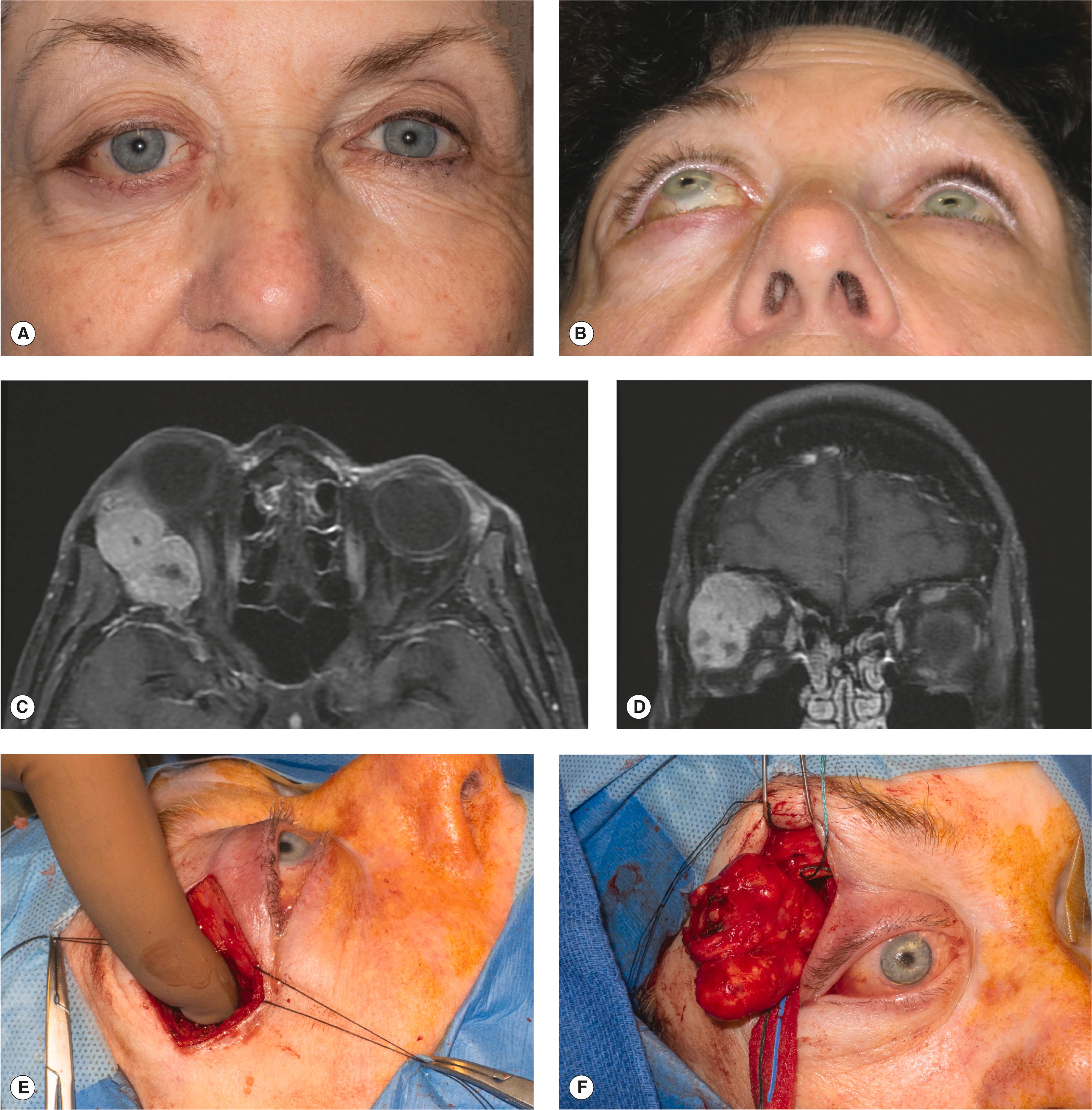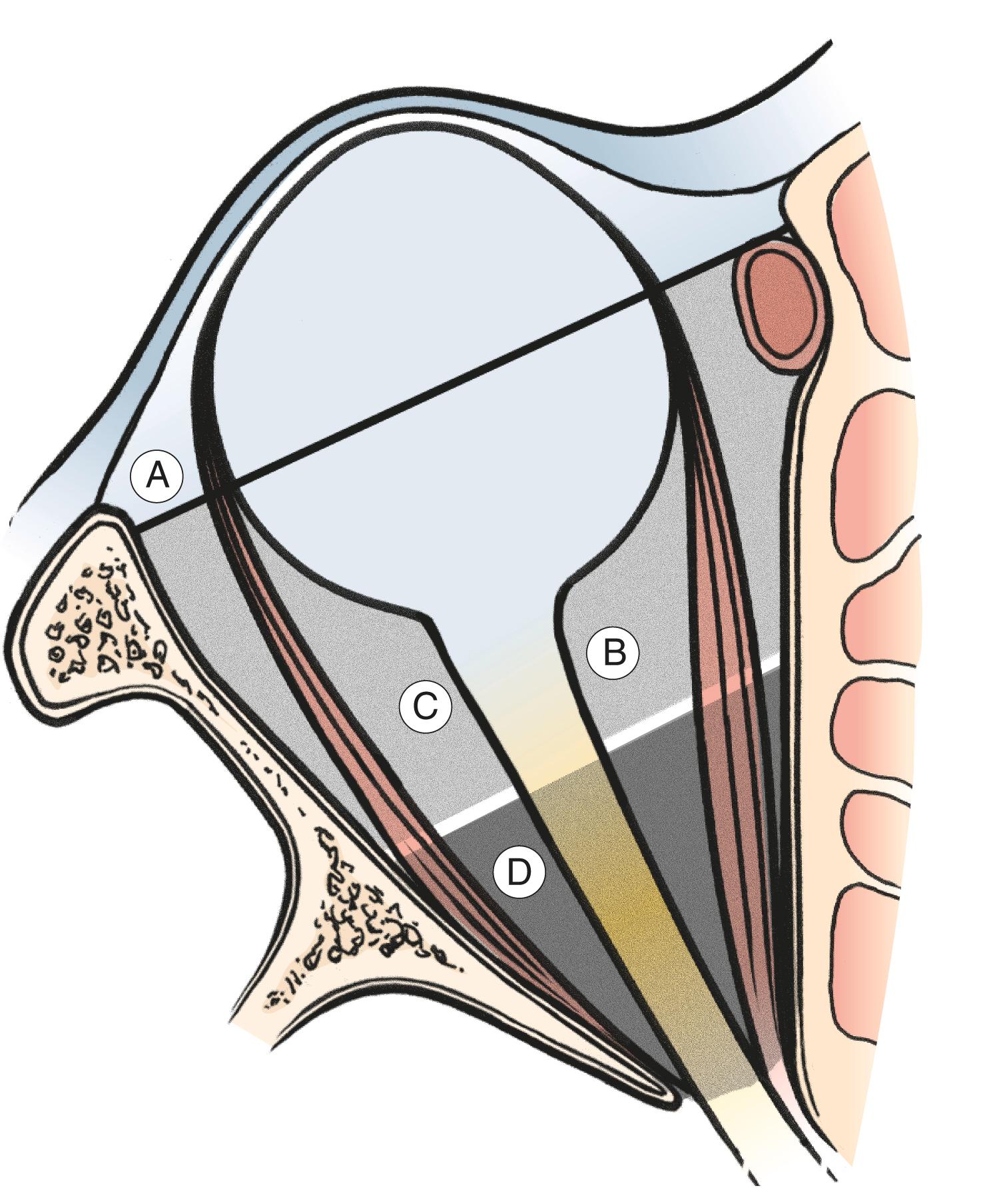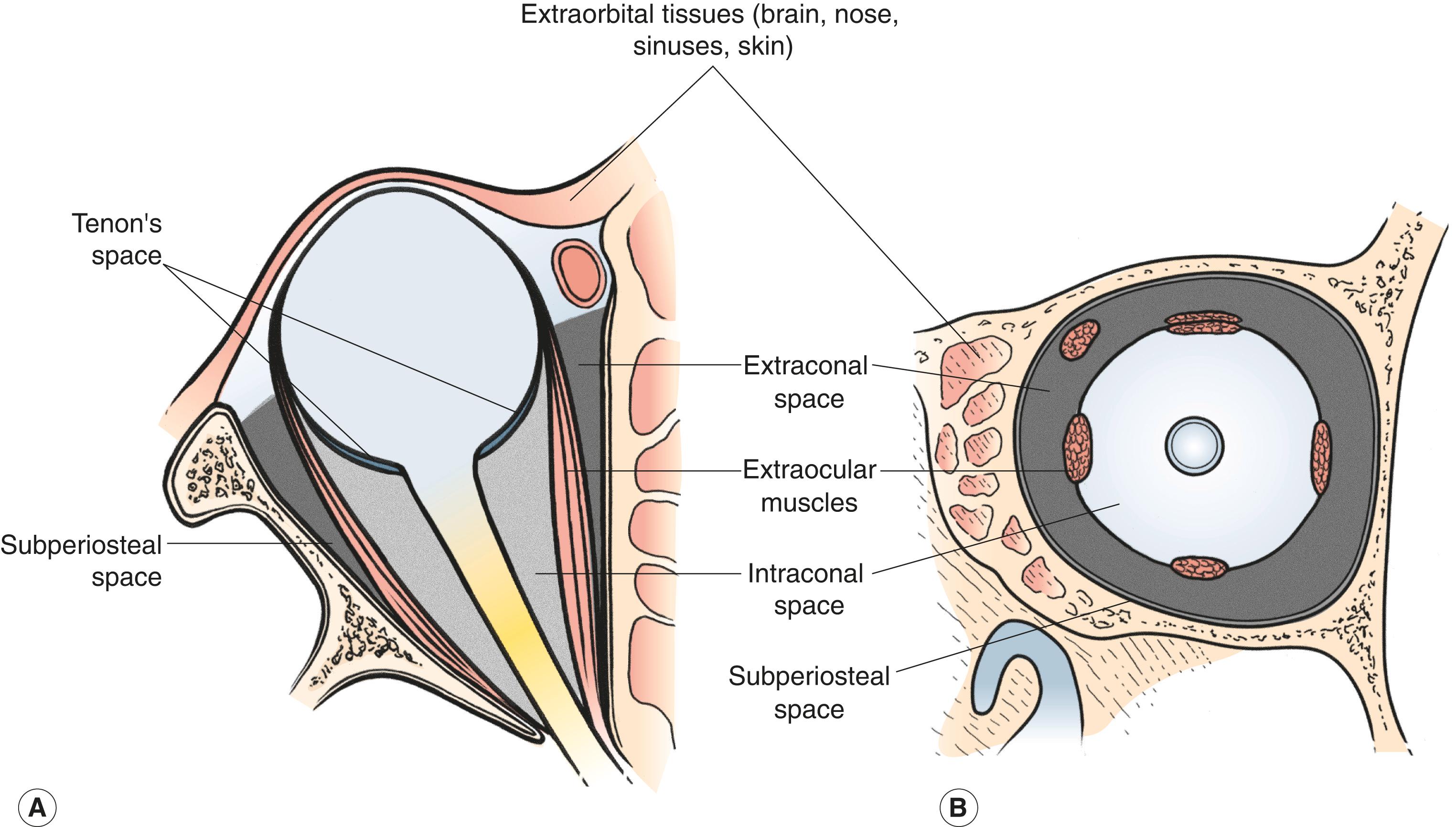Physical Address
304 North Cardinal St.
Dorchester Center, MA 02124
15.1
15.2
15.3
15.4
15.4
15.5
15.6
15.7
15.8
15.9
15.10
15.11
15.12
15.13
15.14
15.15
Visit Expert Consult ( expertconsult.inkling.com ) for videos on topics discussed throughout the text.
Orbital tumors are rare. Biopsy for removal or diagnosis is often necessary. From our discussion in the last chapter, you have a good idea about which tumors should be removed (excisional biopsy) and which tumors should be sampled (incisional biopsy). This chapter describes the logic for choosing the most appropriate surgical approach for anterior and deep orbital masses. Understanding the surgical spaces of the orbit helps you with an anatomic approach that can guide your choice of procedure as well as help you navigate in the orbit itself. Many tumors can be approached from the front of the orbit through an anterior orbitotomy. Tumors deeper in the orbit require more advanced procedures.
Before orbitotomy, you must prepare the patient, operating team, and operating room. A preoperative medical workup and review of medications, especially those with anticoagulative effects, are necessary. The surgical plan should be coordinated with any additional surgical teams and the pathologist. Once in the operating room, the procedure should be reviewed with the scrub team, and the equipment and instruments need to be organized. Some of the specialized equipment, instruments, and surgical techniques used in orbital surgery are reviewed. Proper illumination, magnification, exposure, orbital dissection, and hemostasis are necessary for a successful outcome to the orbitotomy.
Because many of the orbital processes that you see occur in the anterior orbit, you should be most familiar with the anterior orbitotomy approaches. Learn to do the following three of these:
The upper lid skin crease approach
The lower lid transcutaneous approach
The lower lid transconjunctival approach
Because you are likely to be doing these procedures, I describe them in detail.
Deep tumors in the orbit are more difficult to expose. Deeper tumors in the medial aspect of the orbit are especially difficult to reach. Specialized anterior orbitotomy techniques can be used to approach deeper tumors; however, you may not want to perform them until you master the more basic procedures. Because these procedures are used less often, I have included less detail for you. Nevertheless, you should know that they exist.
Deep lateral and apical orbital tumors may require removal of one or more walls of the orbit. These procedures include
The lateral orbitotomy
The transcranial orbitotomy
Deep tumors lateral to the optic nerve are usually approached using the lateral orbitotomy with bone removal. This is the classic orbitotomy, or workhorse, for deeper orbital tumors, so I describe this technique in detail, as well.
Tumors in the orbital apex must be approached using the transcranial orbitotomy. This approach requires elevation of the brain and removal of the orbital roof. The transcranial orbitotomy can be combined with other intracranial approaches to the optic canal, chiasm, and sphenoid wing. The procedure requires coordination between the ophthalmology and neurosurgery teams. You should understand the indications for this procedure. If you have the opportunity to assist with a transcranial orbitotomy, you will see some incredible orbital anatomy.
In the last chapter, we discussed the evaluation of the patient with proptosis. The diagnosis begins with a history and physical examination utilizing the P’ s of the orbital examination. Most patients with proptosis undergo a computed tomography (CT) scan as the primary diagnostic imaging test. A magnetic resonance imaging (MRI) scan is used as a secondary test and is especially useful for evaluating the orbitocranial junction. Some cases require both CT and MRI. Using the information obtained from the history, physical examination, and imaging tests, you can arrive at a differential diagnosis. In a few patients, the exact cause of the proptosis is evident (e.g., thyroid orbitopathy). In other patients, the differential diagnosis is based on the tissue involved (e.g., optic nerve tumor). In the remaining patients, one can only arrive at a pathogenic diagnosis (e.g., inflammation or neoplasm). In a small number of patients, you can initiate medical treatment without further testing (e.g., antibiotic treatment for orbital cellulitis). Most patients require a biopsy.
The orbital biopsy is either incisional or excisional. As a general rule, infiltrative processes suggest malignancy and require an incisional biopsy. The exact nature of a malignancy or benign infiltrative disorder is identified based on the incisional biopsy. Usually, additional medical or surgical therapy is required. Well-circumscribed or cystic masses tend to be benign and amenable to complete removal or excisional biopsy. The ovoid mass of a benign mixed tumor of the lacrimal gland is an example of a well-circumscribed benign tumor for which an excisional biopsy is indicated (a tumor rarely seen clinically, but commonly seen in questions on board examinations). Incomplete removal may allow eventual recurrence of a malignant form of lacrimal tumor. There are exceptions to these rules, the most common being the well-circumscribed mass that is diagnosed histopathologically as a malignant lymphoid process. Incisional rather than excisional biopsy should be used for lymphoid tumors, even though they are well circumscribed. The malignant and benign forms of lymphoid infiltrate cannot be distinguished clinically. Neither form is treated with excision; both are treated with either radiation therapy or medication.
There are several factors to consider in choosing the surgical approach:
Anterior or deep location
Position relative to the optic nerve
Surgical space occupied
Goal of biopsy
Incisional
Excisional
Based on these factors, the safest and most practical approach to reaching the orbital tumor is chosen ( Figures 15.1 and 15.2 ). In most patients, the skin incision is chosen to provide optimal scar camouflage by placing it in a skin crease, hiding it on a posterior surface of the eyelid (transconjunctival incision), or placing it adjacent to prominent anatomic landmarks such as the eyebrow or eyelashes ( Figure 15.3 ).



The anterior-posterior position of a mass within the orbit is the most important factor to consider in choosing a surgical approach. Tumors anterior to the equator of the eye are most commonly approached from the front of the orbit using a type of anterior orbitotomy. Tumors posterior to the equator of the eye require more advanced deep surgical approaches. The choice of orbitotomy for deep tumors depends on the relationship of the tumor to the optic nerve.
A fundamental principle of orbital surgery is
Choose an orbitotomy approach that avoids crossing the optic nerve
Following this guideline, deep orbital tumors lateral to the optic nerve are approached with a lateral orbitotomy approach. Removal of the lateral orbital wall provides excellent access to these tumors.
Deep tumors medial to the optic nerve are more difficult to reach because there is no bone that can be easily removed to provide good exposure and access. The surgical spaces of the medial orbit can be reached through deep medial orbitotomy approaches, through either the eyelid or the conjunctiva. Access to the apical medial orbit from these anterior orbitotomy approaches is limited. In unusual situations, the medial orbital wall may be removed and limited access to the deep medial orbit can be obtained ( Figure 15.4 ).

The surgical approach may be influenced by the goal of the operation. It is easier to perform an incisional biopsy through a small incision than it is to perform an excisional biopsy. For example, an incisional biopsy of the optic nerve can be performed through either a transconjunctival anterior orbitotomy or a lateral orbitotomy approach. Excision of the entire optic nerve, however, requires a much wider area of exposure, usually provided only by a transcranial orbitotomy approach. You can see that the intent of the operation is a factor in your choice of orbitotomy approach ( Table 15.1 ).
| Location | Surgical procedure |
|---|---|
| Anterior to the equator of the eye | Anterior orbitotomy |
| Posterior to the globe and lateral to the nerve | Lateral orbitotomy |
| Posterior to the globe and medial to the nerve | Deep medial anterior orbitotomy |
| Posterior one third of orbit, optic canal, chiasm | Transcranial and transnasal orbitotomy |
The surgical spaces of the orbit, already discussed in Chapter 2, Chapter 13 , are
Intraconal space
Extraocular muscles
Extraconal space
Subperiosteal space
Tenon’s space
Extraorbital space
You should already know these spaces ( Figure 15.5 ). This section is intended as an illustration of how you can begin to think of the spaces of the orbit and their relationship to the orbitotomy approach. Don’t memorize the specific pathologic processes and approaches mentioned here. We talk about them again later in this chapter. Just start to get an idea of how you are going to choose the orbitotomy approach, based on the position of the pathologic process and what you have already learned in this chapter.

The extraconal space contains the lacrimal gland, superior oblique muscle and trochlea, and nerves and vessels in the extraconal orbital fat. An enlarged lacrimal gland is often palpable in the upper lid and then is readily accessible through an anterior orbitotomy using the upper lid skin crease approach. Lymphoid tumors are among the most common orbital masses. Because lymphomas tend to occur in the lacrimal gland or elsewhere anteriorly in the extraconal fat, anterior orbitotomy approaches to the extraconal space are commonly used. When a lacrimal gland mass is not palpable (mostly posterior to the globe), a lateral orbitotomy, usually with bone removal, is required. The superior oblique muscle and trochlea are in the medial portion of the extraconal space, but rarely require biopsy. Schwannoma of the frontal nerve may be seen in the superonasal quadrant and can be approached anteriorly, but if the mass extends into the apex, a transcranial approach may be necessary for removal. The anterior portion of the superior ophthalmic vein lies in the extraconal space, but it almost never requires surgical intervention.
The intermuscular septum lies between the anterior portion of the extraocular muscles, separating the intraconal and extraconal spaces. The muscles may become involved in neoplastic or inflammatory processes. The most common condition is thyroid orbitopathy. Painful inflammation of the muscles, myositis, may also occur. Primary neoplasms of the muscles are very rare, but metastatic lesions do occur. Although biopsies are not often performed on the extraocular muscles, the muscles can be approached surgically through anterior orbitotomy incisions if the pathologic lesion is anterior. If the enlargement of the muscle is posterior, you can decide on the best approach for incisional biopsy following the principles described in the previous section. The extraocular muscles are important surgical landmarks to guide your surgical dissection. During lateral orbitotomy approaches, the intraconal space is usually entered between the lacrimal gland and the lateral rectus muscle. We discuss this dissection technique further in the section Approach to Deep Lateral Lesions: The Lateral Orbitotomy.
The subperiosteal space is the potential space between the orbital bones and the periorbita. A hematoma may collect in this space from an adjacent fracture. A collection of pus, a subperiosteal abscess, may collect medially from an adjacent ethmoid sinus infection. For drainage of a subperiosteal abscess, you usually approach the medial subperiosteal space anteriorly through the skin and conjunctiva with elevation of the periorbita from the orbital rim and dissection posteriorly along the medial orbital wall (frontoethmoidal and transcaruncular anterior orbitotomy). Repair of orbital floor fractures begins with surgical approaches to the subperiosteal space using transconjunctival or transcutaneous lower eyelid anterior orbitotomy techniques. Similarly, you can approach medial wall fractures using the transcaruncular anterior orbitotomy technique.
The Tenon’s space lies between the eye and the fibrous capsule, or Tenon’s capsule, which surrounds all but the anterior portion of the eye. You may have already operated in this space when performing an enucleation or scleral buckle procedure. Although we usually don’t think of it, these operations start with a transconjunctival anterior orbitotomy. Tenon’s space is rarely involved in pathologic processes; one example is the extraocular extension of a choroidal melanoma.
The extraorbital space includes all the tissues surrounding the orbit: bone, brain, sinus, nasal tissues, skin, and conjunctiva. You are already familiar with some of the many problems that originate in these tissues and involve the orbit secondarily. For many of these tissues, the surgical approach is obvious, whereas for others, decisions require input from other surgical specialties for which interdisciplinary cooperation is essential to the success of the operation.
We talk about the orbital spaces in the context of the orbitotomy procedures again and again throughout this chapter; so start thinking of these spaces in the context of orbitotomy approaches.
There is no consistent nomenclature or classification of orbitotomy approaches. Most of the names used in this text and by other surgeons are descriptive. You shouldn’t memorize these terms because they can mean different things to different people. Some commonly used descriptive terms and my interpretation of them are
Anterior orbitotomy means that the approach is from the front of the orbit, usually through the eyelid or conjunctiva. In general, an anterior orbitotomy approach does not involve bone resection.
Lateral orbitotomy means that the approach is from the lateral side of the orbit. In general, the term lateral orbitotomy implies that the lateral rim will be removed. A lateral orbitotomy can be performed through a small skin incision at the lateral canthus without any bone removal.
The terms anterior and deep are opposite. The term superficial orbital tumor is not used. Anterior tumors are palpable and accessible by the anterior approaches. Deep is usually used to describe posterior tumors in the orbit.
Anatomy accessible only via transcranial orbitotomy includes the posterior one third of the orbit, superior orbital fissure, sphenoid wing, and chiasm.
Deep tumors are posterior to the globe. I use the term deep medial anterior orbitotomy for approaches to intraconal tumors medial to the nerve. As we discussed above, the lateral orbitotomy is used for approaches to deep tumors lateral to the nerve.
Apical implies the posterior one third of the orbit. I use the term orbitocranial to describe tumors involving the orbital apex and optic canal, chiasm, superior orbital fissure, or other intracranial structures. The transcranial orbitotomy is used to approach apical or orbitocranial tumors. The terms superotemporal orbitotomy and panoramic orbitotomy are types of transcranial orbitotomy approaches.
Review the P ’s of the orbital examination and the approach to the patient with proptosis. You should know the P ’s by memory. You should also understand the flow from history and physical examination to imaging to differential diagnosis and, finally, to biopsy or treatment.
State in your own words how each of these factors influences the choice of orbitotomy:
Anterior or deep location
Position relative to the optic nerve
Surgical space occupied
Goal of biopsy, incisional or excisional
Before orbitotomy, the patient should have a general medical examination with an emphasis on the cardiopulmonary system to receive clearance for surgery. The blood pressure should be optimally controlled before orbitotomy. All anticoagulants including warfarin, aspirin products, and nonsteroidal antiinflammatory agents should be discontinued before surgery, if possible.
Preoperative informed consent should be obtained. Damage to important neurovascular structures is possible but rarely occurs. Postoperative swelling, diplopia, and upper eyelid ptosis are common but usually resolve. In rare patients, blindness may occur because of intraoperative injuries to the optic nerve or postoperative hemorrhage. Patients undergoing deep orbitotomy procedures are usually hospitalized overnight. The visual acuity is checked every 2 hours for the first 12 to 24 postoperative hours. Death is an extremely unlikely occurrence during an orbitotomy procedure.
If the orbitotomy is part of a multidisciplinary procedure, the division of responsibilities among the various surgical subspecialists should be clearly outlined. If you anticipate an unusual diagnosis, preoperative discussion with the pathology team is appropriate.
You should have a plan for the setup of the room and any specialized equipment required. If you anticipate using an operating microscope, it should be positioned and adjusted while the patient is being prepared. Any pathology requisitions should be filled out before you start the surgery. You should discuss the plan for operation with the nursing staff before beginning the procedure.
Specialized orbital instruments are used ( Box 15.1 ). Retraction of skin is necessary, using small (Storz double-fixation forceps) or large (Joseph) skin hooks and suture retractors (4-0 silk). Retraction of the orbital fat is facilitated with Sewall and malleable ribbon retractors of various lengths. Neurosurgical cottonoids placed under the retractors prevent fat prolapse into the surgical wound. A variety of periosteal elevators should be available, including Freer, Joseph, and Dean elevators. Bone removal equipment, including a power saw, drill, and bone rongeurs, is necessary if deep orbitotomy procedures with bone removal are anticipated. A microplating system is useful to repair complex orbital bone cuts. A Freer elevator or a long cotton-tipped applicator is a useful orbital dissection tool. Small neurosurgical dissectors can be helpful.
* Note: Bausch+Lomb owns Storz instrument company. Part numbers are also listed under bauschinstruments.com . Ophthalmic instruments begin with the letter E. ENT instruments begin with the letter N. The company Storz Ophthalmic Instruments should not be confused with the company Karl Storz, which makes endoscopes. Codman instruments are now found at Symmetry Surgical, Inc.
Skin retractors
4-0 silk traction suture, reverse cutting (Ethicon 783G G-3 single-armed cutting needle)
4-0 silk, taper needle for bridle sutures under extraocular muscles (Ethicon K-871 RB-1 needle)
Joseph skin hooks: large double-pronged skin hooks (Storz N4730)
Storz double-fixation hooks: small double-pronged skin hooks (Storz E0533)
Orbital retractors
Sewall retractors
7 x 52 mm blade (Storz N3321)
9 x 44 mm blade (Storz N3322)
11 x 56 mm blade (Storz N3323)
13 x 70 mm blade (Storz N3324)
Malleable ribbon retractors (brain spatula)
Symmetry (Codman) ribbon retractor
5/8 × 8 in (50–5638)
3/4 × 8 in (50–5639)
1/4 in special order (22-0006)
Neurosurgical cottonoids (Johnson and Johnson Codman surgical patties J-J801407)
Freer septal elevator: light elevator (4.5 mm Storz N2348, 6.5 mm Storz N2349)
Joseph periosteal elevator: heavy, but narrow elevator 4 mm (Storz N4610)
Dean periosteotome: heavy elevator 8 mm (Ambler surgical)
Cottel septum elevator: rounded elevator (Storz N4660)
Kerrison rongeur (upbiting 90 degree)
No. 0 Extra Small (Storz N1950)
No. 1 Small (Storz N1951)
No. 2 Medium (Storz N1952)
Leksell laminectomy rongeur: large bone rongeur (Codman 53–1125)
Spurling Kerrison rongeur
Angled 40-degree upbiting, 3 mm (Codman 53–1515)
Angled 90-degree upbiting, 3 mm (Codman 53–1516)
Angled 90-degree downbiting, 3 mm (Codman 53–1517)
Hall microsagittal saw
Hall Surgairtome (air drill)
Bien drill (electric drill)
Freer elevator (Storz N2348)
Cotton-tipped applicator, 6 inch
Neurosurgical dissectors (Rhoton)
Become a Clinical Tree membership for Full access and enjoy Unlimited articles
If you are a member. Log in here